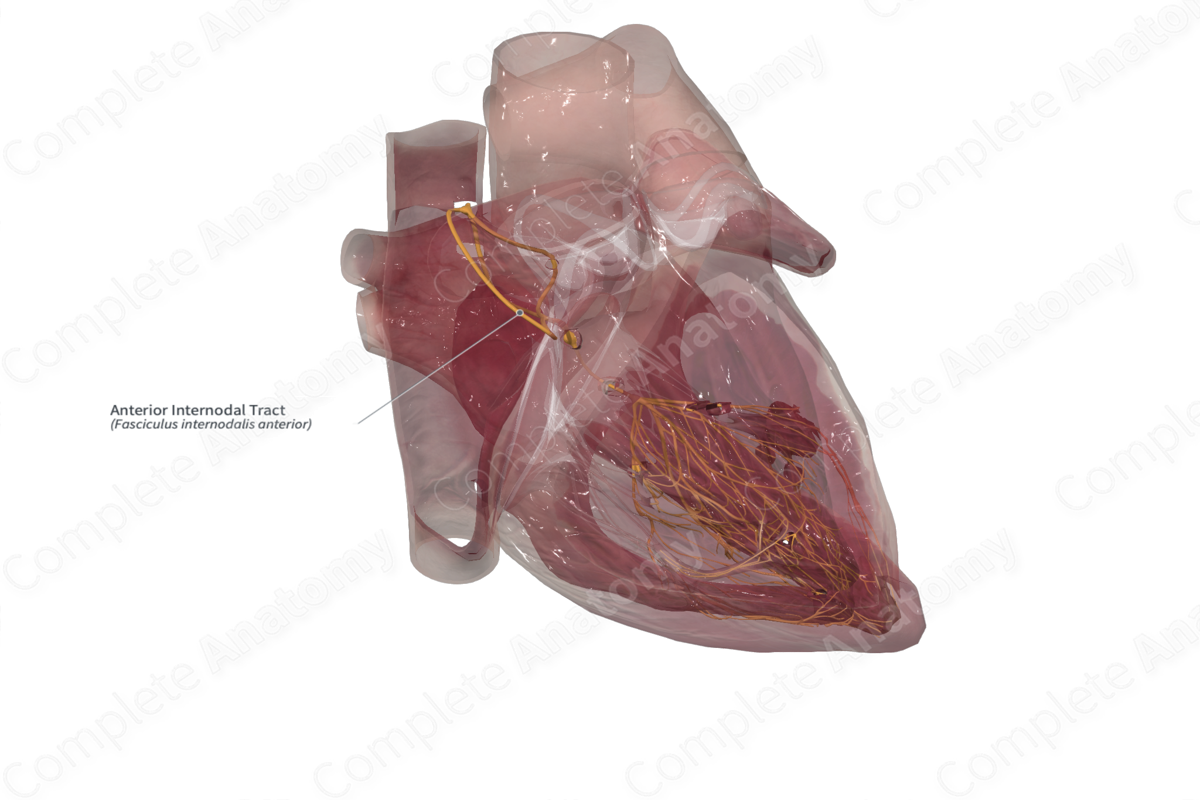
Quick Facts
Origin: Sinuatrial node.
Course: Along the anterior surface of the right atrium towards the AV node.
Branches: Bachmann’s bundle to the left atrium.
Supply: Autonomic innervation to the atria and AV node.
Related parts of the anatomy
Origin
The anterior internodal tract emerges from the anterior surface of the sinuatrial (SA) node.
Course
The anterior internodal tract runs down the anterior surface of the right atrium towards the atrioventricular (AV) node. Along its way it sends a prominent branch to the left atrium (Bachmann’s bundle).
Branches
The anterior internodal tract runs to the AV node. The only major branch, Bachmann’s bundle, emerges from the tract, crosses the interatrial septum to the left atrium, thus connecting both atria (not shown in 3D model) (Dorland, 2011).
Supplied Structures & Function
The anterior internodal tract serves to propagate the SA node action potential to the tissues of the right and left atria. Additionally, it acts with the other internodal tracts to transmit the SA node action potential to the AV node at the base of the right atrium (Katz, 2010, Anderson et al., 2009).
References
Anderson, R. H., Yanni, J., Boyett, M. R., Chandler, N. J. and Dobrzynski, H. (2009) 'The anatomy of the cardiac conduction system', Clin Anat, 22(1), pp. 99-113.
Dorland, W. A. (2011) Dorland's Illustrated Medical Dictionary. 32nd edn.
Katz, A. M. (2010) Physiology of the Heart. M - Medicine Series: Wolters Kluwer Health/Lippincott Williams & Wilkins Health.
Learn more about this topic from other Elsevier products
Heart Conduction

Cardiac conduction defects are among the most common cardiac rhythm disturbances and are characterized by progressive alteration of cardiac conduction through the His-Purkinje system with right or left bundle branch block and widening of the QRS complex.




